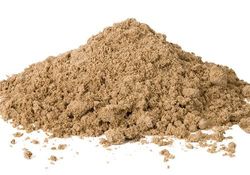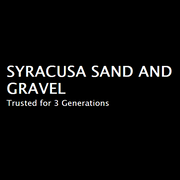3 Different Types of Topsoil & Their Uses

Unless you’re a professional landscaper, chances are you’re not familiar with each type of topsoil that’s available. But if you want to have the healthiest yard possible, you should be sure you’re using the right materials for the right conditions. Before heading down to your local outdoor store to pick up any old topsoil, read this guide from the professionals with over three generations of experience at Victor, NY’s Syracusa Sand & Gravel.
Your Guide to 3 Types of Topsoil
1. Sand
 Ever wonder why you can sometimes see greenery growing on a sandy beach? That’s because it’s not impossible for life to grow in sandy topsoil. The large particles of silica, quartz, and other rocks that make up sandy topsoil allow moisture to quickly drain, making it a great material for plants that don’t need a lot of water, such as cacti, tulips, and hibiscus.
Ever wonder why you can sometimes see greenery growing on a sandy beach? That’s because it’s not impossible for life to grow in sandy topsoil. The large particles of silica, quartz, and other rocks that make up sandy topsoil allow moisture to quickly drain, making it a great material for plants that don’t need a lot of water, such as cacti, tulips, and hibiscus.
2. Loam
Loam can come in a variety of different concentrations and contains a mixture of clay, sand, and silt. The right choice for you will depend on your specific needs for topsoil, but in general, loam is a better option than sand when you need a greater level of moisture and nutrients. Though it may be a little harder to find commercially, loam is one of the best materials you can use in your garden.
3. Clay
Made up of decayed and organic materials, clay is also a fantastic natural option for plants you won’t be relocating. Because it tends to be dry and a little harder to dig into than other, looser topsoils, most homeowners reserve clay for trees, such as oaks, maples, poplars, and hickories.
Need help finding the perfect topsoil? Call the professionals at Syracusa Sand & Gravel today at (585) 310-2693. You can also visit them online for more information regarding all their services and gravel products.
About the Business
(1 reviews)
Have a question? Ask the experts!
Send your question

